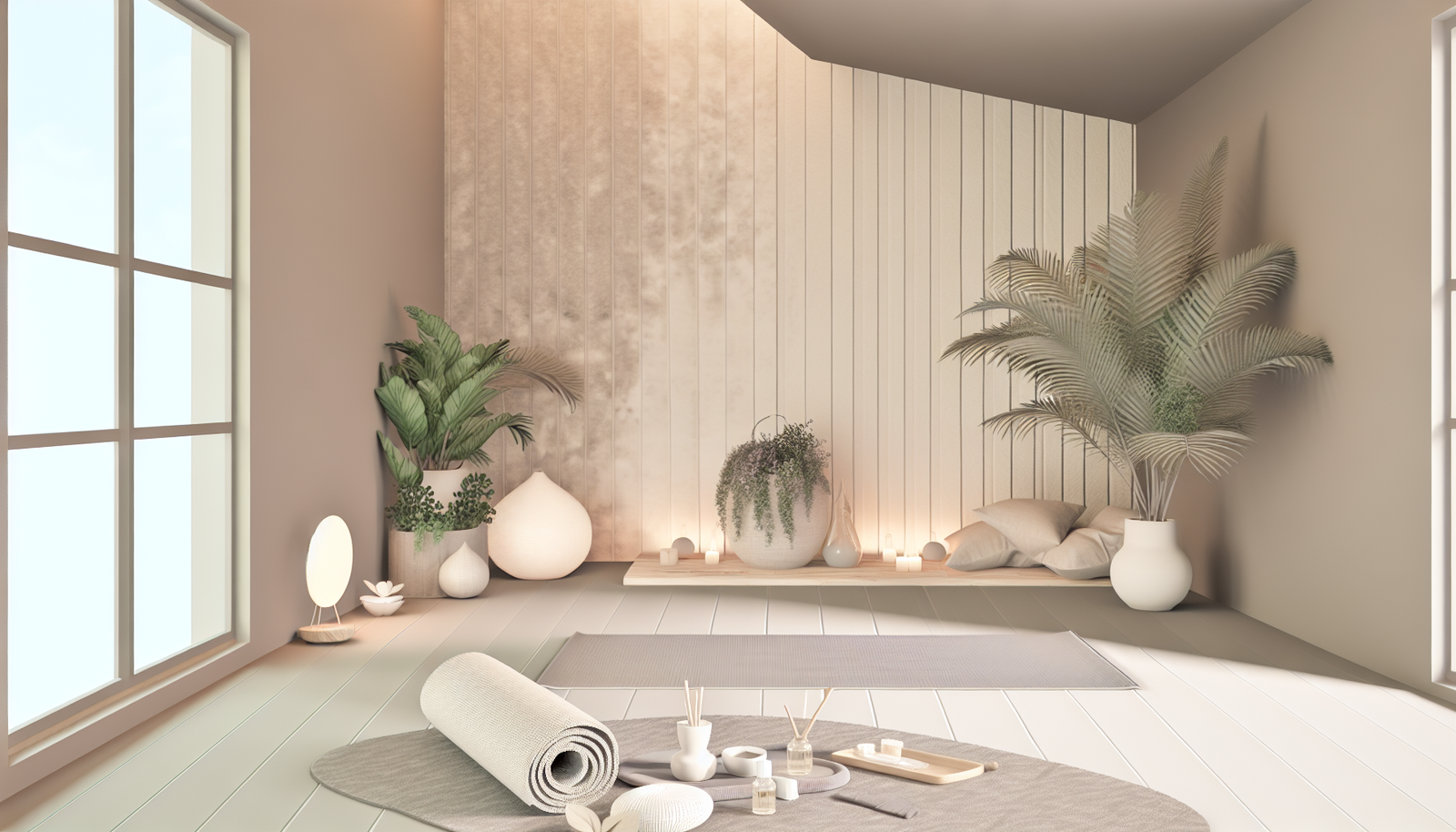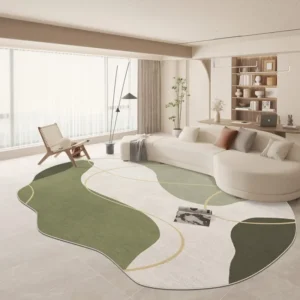
In our modern lives, we spend an astonishing amount of time sitting. Whether it’s at a desk, in front of a screen, or during commutes, prolonged sitting has become an undeniable part of our daily routine. This sedentary lifestyle, while often unavoidable, comes with a significant price tag: compromised posture, nagging back pain, reduced energy, and even long-term health issues. But what if your furniture could actually work *for* you, instead of against you? What if your chair, desk, or even your bed could actively contribute to your well-being? This is the promise of **wellness furniture** – a revolutionary approach to design that prioritizes your body’s natural alignment and health. This comprehensive guide will explore how investing in the right wellness furniture supports posture, enhances comfort, and ultimately transforms your living and working spaces into havens of health and productivity. By understanding the principles behind ergonomic design and making informed choices, you can mitigate the negative effects of prolonged sitting and embrace a more vibrant, pain-free existence.
You’ll learn how to identify the best ergonomic solutions, from cutting-edge standing desks to supportive recliners, and understand the science that makes them so effective. We’ll dive deep into specific product types, offer practical advice for setting up an ergonomic workstation, and reveal how even subtle changes in your home environment can lead to profound improvements in your physical and mental health. Get ready to rethink your relationship with your furniture; it’s time to invest in your well-being.
The Silent Epidemic of Poor Posture and Its Impact
Before we explore the solutions, let’s confront the problem head-on. Poor posture isn’t just about looking slumped; it’s a critical health issue affecting millions globally. The pervasive culture of desk work, coupled with constant smartphone use, has given rise to what experts call “tech neck” and “slouching syndrome.” These insidious habits slowly erode our spinal health, leading to a cascade of problems.
Think about your typical day. How often do you find yourself hunched over a laptop, craning your neck at a phone, or sinking into an unsupportive sofa? These habitual positions train your body to adopt unnatural curves, straining muscles, ligaments, and discs. Over time, this leads to chronic pain in the neck, shoulders, and lower back. But it doesn’t stop there. Poor posture can also impact your breathing, digestion, circulation, and even your mood. It can reduce your energy levels, make you appear less confident, and contribute to long-term conditions like sciatica and degenerative disc disease. This silent epidemic demands a proactive solution, and that solution often begins with the immediate environment around us. Understanding the root causes is the first step towards a healthier back and a more energized you.
Image Suggestion: Infographic illustrating the negative effects of poor posture (e.g., tech neck, rounded shoulders, lower back strain) vs. good posture.
Alt Text: Infographic showing skeletal changes and muscle tension caused by prolonged poor posture, contrasting with a healthy, aligned spine.
Common Causes of Postural Issues in Daily Life
- Prolonged Sitting: Hours spent at a desk without movement.
- Unsupportive Furniture: Chairs and sofas lacking proper lumbar or neck support.
- Digital Device Overuse: “Text neck” from looking down at phones or tablets.
- Lack of Core Strength: Weak abdominal and back muscles unable to support the spine.
- Sedentary Lifestyle: Insufficient physical activity and stretching.
- Stress: Muscle tension and involuntary hunching.
What is Wellness Furniture and Why It Matters for Your Body
At its core, wellness furniture is intentionally designed to support the human body’s natural biomechanics, promote spinal alignment, and encourage dynamic movement. It goes beyond mere aesthetics or comfort; it’s about creating an environment that actively contributes to your physical and mental health. Unlike conventional furniture, which often only considers static comfort, wellness pieces are engineered with extensive research into ergonomics, anthropometrics, and human physiology. They anticipate your body’s needs, offering adaptable features that cater to individual differences.
The goal is to minimize strain, alleviate pressure points, and encourage healthy movement throughout the day. This type of furniture isn’t a luxury; it’s a foundational investment in preventing musculoskeletal disorders, boosting productivity, and improving overall quality of life. From adjustable desks to ergonomic sofas, each piece serves a purpose: to empower you to live better, work smarter, and feel healthier within your own spaces. It’s a holistic approach to furnishing, recognizing that our surroundings deeply influence our well-being.
The Science Behind Ergonomic Design
Ergonomics is the scientific discipline concerned with the understanding of interactions among humans and other elements of a system. When applied to furniture, this means designing objects that fit the user, not the other way around. Key principles include:
- Anthropometrics: Using data on human body measurements to design appropriate dimensions.
- Biomechanical Principles: Understanding how forces act on the body during movement and stillness.
- Adjustability: Allowing users to customize settings to fit their unique body shape and tasks.
- Support: Providing contoured support for the natural curves of the spine (lumbar, thoracic, cervical).
- Encouraging Movement: Designing furniture that facilitates micro-movements and changes in posture, rather than locking the body into a static position.
Applying these principles is what differentiates true wellness furniture from standard options, transforming passive objects into active contributors to your health.
Essential Wellness Furniture Pieces for Optimal Posture Support
Transitioning to a wellness-focused environment doesn’t mean overhauling everything at once. It means making strategic choices about the pieces you interact with most. Let’s explore the key categories of wellness furniture that support posture and contribute significantly to your overall well-being. Each type addresses specific needs, whether you’re working, relaxing, or sleeping.
1. Ergonomic Office Chairs: Your Spinal Savior
The ergonomic office chair is arguably the most critical piece of wellness furniture for anyone spending significant time at a desk. It’s far more than just a seat; it’s an adjustable support system designed to maintain the spine’s natural S-curve, distribute weight evenly, and reduce pressure points. A truly ergonomic chair offers a plethora of adjustments to perfectly fit your body.
Image Suggestion: High-quality image of an ergonomic office chair highlighting adjustable features (lumbar support, armrests, seat depth).
Alt Text: An advanced ergonomic office chair with adjustable lumbar support, armrests, and headrest, showcasing its various customizable features.
Key Features to Look For:
- Adjustable Lumbar Support: Crucial for maintaining the natural inward curve of your lower back. Look for chairs with dynamic or height-adjustable lumbar pads.
- Seat Depth Adjustment: Ensures 2-4 fingers’ worth of space between the front edge of the seat and the back of your knees, preventing pressure on circulation.
- Height Adjustable Armrests: Allows elbows to bend at a 90-degree angle when typing, reducing shoulder and neck strain.
- Recline and Tilt Mechanism: Promotes dynamic sitting, encouraging subtle shifts in posture throughout the day. A synchronized tilt mechanism is ideal.
- Breathable Material: Prevents heat buildup and discomfort. Mesh or breathable fabrics are excellent choices.
- Stable Base and Smooth Casters: Ensures safety and ease of movement.
Recommendation: When investing in an ergonomic office chair, prioritize models that offer extensive adjustability and positive reviews from users with similar body types to yours. Brands like Herman Miller, Steelcase, and Humanscale are often cited for their superior engineering and durability.
2. Standing Desks: Dynamic Work Solutions
The standing desk (or sit-stand desk) has revolutionized the modern office by combating the perils of prolonged sitting. It allows you to seamlessly transition between sitting and standing throughout your workday, promoting movement and reducing the static load on your spine. This dynamic approach to work is a cornerstone of wellness furniture.
Image Suggestion: A person working comfortably at a height-adjustable standing desk, alternating between sitting and standing.
Alt Text: A professional successfully utilizing a height-adjustable standing desk, demonstrating both sitting and standing positions with good posture.
Benefits of Standing Desks:
- Reduced Sedentary Time: Directly addresses the health risks associated with prolonged sitting.
- Improved Circulation: Keeps blood flowing, reducing feelings of fatigue.
- Enhanced Energy Levels: Standing can boost alertness and focus.
- Reduced Back Pain: Alleviates pressure on the lower back often experienced during long sitting periods.
- Increased Calorie Burn: A modest but measurable increase in metabolism.
What to Consider:
- Electric vs. Manual: Electric desks offer smooth, effortless height adjustments and often have memory presets. Manual cranks or pneumatic lifts are more budget-friendly but less convenient.
- Height Range: Ensure it can accommodate your sitting and standing heights comfortably.
- Weight Capacity: Check if it can support your monitors, computer, and other equipment.
- Stability: A wobbly desk is distracting and unsafe. Look for sturdy frames.
Pro Tip: Don’t just stand all day! The key is movement. Aim for a ratio of 20-30 minutes standing for every 30-40 minutes sitting, or whatever feels comfortable for your body. Integrate an anti-fatigue mat to make standing more comfortable.
3. Ergonomic Recliners and Lounge Chairs: Relaxation Redefined
Wellness furniture isn’t just for the office; it extends to your relaxation spaces as well. Traditional sofas and loungers often encourage slouching, but ergonomic recliners are designed to support your body even during leisure. They provide proper support for your head, neck, and lumbar region, allowing for true relaxation without compromising spinal health.
Image Suggestion: A sleek, modern ergonomic recliner showing headrest and lumbar support features.
Alt Text: A contemporary ergonomic recliner designed for maximum comfort and spinal alignment, featuring adjustable headrest and integrated lumbar support.
Features for Relaxed Support:
- Zero-Gravity Recline: Many ergonomic recliners offer a “zero-gravity” position, elevating your legs above your heart to decompress the spine and improve circulation.
- Adjustable Headrest and Lumbar Support: Crucial for maintaining neck and lower back alignment, even when lounging.
- Customizable Positions: Multiple recline angles allow you to find the perfect position for reading, watching TV, or napping.
- Footrest Integration: Supports the legs and promotes healthy blood flow.
Choosing the right recliner transforms your downtime into an opportunity for restorative rest, instead of contributing to back strain.
4. Supportive Beds and Mattresses: The Foundation of Rest
We spend approximately one-third of our lives in bed, making the correct mattress and bed frame perhaps the most critical piece of wellness furniture. A truly supportive bed ensures proper spinal alignment throughout the night, reducing pressure points and promoting restorative sleep. This directly impacts how our bodies recover and feel the next day.
Key Considerations for Sleep Support:
- Mattress Firmness: This is highly individual. Generally, a medium-firm mattress is recommended for most, offering a balance of support and pressure relief. It should contour to your body’s natural curves without sagging.
- Mattress Type:
- Memory Foam: Conforms to your body, offering excellent pressure relief. Good for side sleepers.
- Innerspring: Offers traditional bounce and good support. Good for back and stomach sleepers.
- Hybrid: Combines springs for support with foam layers for comfort.
- Latex: Durable, responsive, and often hypoallergenic.
- Pillow Selection: A good pillow works in conjunction with your mattress to keep your head and neck aligned with your spine. Choose based on your sleeping position (thicker for side sleepers, thinner for back/stomach sleepers).
- Adjustable Bed Frames: These allow you to elevate your head or feet, which can alleviate back pain, improve circulation, and reduce snoring. They are excellent for those with specific medical conditions or simply for greater comfort while reading or watching TV in bed.
Expert Tip: Test mattresses thoroughly. Lie on them in your typical sleeping position for at least 15-20 minutes. Don’t be afraid to utilize trial periods offered by many mattress companies.
5. Ergonomic Accessories and Small Changes, Big Impact
While large furniture items are crucial, a suite of smaller, often overlooked, accessories can significantly enhance your wellness furniture setup. These pieces fill in the gaps and fine-tune your environment for optimal posture and comfort.
- Footrests: For shorter individuals or those whose feet don’t reach the floor comfortably, an adjustable footrest can prevent dangling feet, reduce lower back strain, and improve circulation.
- Monitor Arms: Elevate your computer monitor to eye level, preventing neck strain and encouraging a more upright posture. Dual monitor arms are popular for multi-screen setups.
- Ergonomic Keyboards and Mice: Designed to minimize wrist strain and repetitive stress injuries. Vertical mice and split keyboards are popular options.
- Laptop Stands: Elevate your laptop screen to eye level, especially when not using an external monitor, to avoid hunching.
- Lumbar Support Cushions: A portable way to add extra support to a non-ergonomic chair or car seat.
- Anti-Fatigue Mats: Essential for standing desk users, these mats cushion your feet and encourage subtle movements, reducing fatigue.
These accessories are often more affordable entry points into ergonomic living and can make a remarkable difference in daily comfort and pain prevention.
Designing Your Healthy Space: Integrating Wellness Furniture
Integrating wellness furniture doesn’t mean sacrificing aesthetics for function. Modern ergonomic designs are often sleek, minimalist, and available in a wide range of styles to complement any decor. The key is to blend functionality with your personal taste, creating spaces that are both beautiful and beneficial for your health.
Creating an Ergonomic Home Office Setup
Your home office is where many postural issues begin. A thoughtful setup can make all the difference:
- The Core: Start with an excellent ergonomic chair and a sit-stand desk. These are your foundational pieces.
- Monitor Placement: Position your monitor(s) so the top third of the screen is at eye level. This prevents neck flexion. If using two monitors, place the primary one directly in front of you.
- Keyboard and Mouse: Keep them close to your body to avoid reaching. Your wrists should be flat, not bent up or down.
- Lighting: Ensure adequate, glare-free lighting to prevent eye strain, which can indirectly lead to postural changes.
- Movement Promoters: Incorporate short breaks, stretching, and even a small under-desk elliptical or walking pad if space allows.
- Cable Management: A tidy workspace reduces visual clutter and tripping hazards.
Image Suggestion: Diagram of an ideal ergonomic workstation setup, showing correct chair height, monitor placement, keyboard/mouse position, and foot placement.
Alt Text: Diagram illustrating an ideal ergonomic home office setup, highlighting correct posture for desk work with an adjustable chair, monitor, keyboard, and footrest.
Enhancing Your Living Room for Postural Health
The living room is often overlooked but can be a major culprit for poor posture.
- Sofa Support: Look for sofas with firmer cushions and good back support rather than sinking, plush options. Add decorative pillows that can double as lumbar or neck support.
- Ergonomic Recliner: A dedicated ergonomic recliner offers a superior relaxation experience, supporting the spine in various positions.
- TV Height: Mount your TV at eye level when seated, or choose a console that positions it comfortably. Avoid craning your neck upward or downward.
- Mindful Device Use: When using tablets or phones on the sofa, use lap stands or prop them up to minimize “tech neck.”
The Long-Term Benefits: Beyond Comfort and Aesthetics
The decision to invest in wellness furniture goes far beyond immediate comfort. It’s a proactive step towards long-term health, productivity, and overall well-being. The benefits accrue over time, transforming subtle daily discomforts into a foundation of resilience.
Improved Physical Health and Pain Reduction
The most immediate and tangible benefit is the reduction, and often elimination, of chronic musculoskeletal pain. By maintaining proper spinal alignment—whether sitting, standing, or lying down—you alleviate pressure on discs, nerves, and muscles. This can significantly reduce instances of:
- Lower Back Pain: A common complaint, often stemming from poor sitting posture.
- Neck and Shoulder Tension: Frequently caused by improper monitor height, keyboard positioning, or phone use.
- Sciatica: Pressure on the sciatic nerve can be exacerbated by prolonged, unsupported sitting.
- Repetitive Strain Injuries (RSIs): Ergonomic accessories help prevent conditions like carpal tunnel syndrome.
Consistent use of wellness furniture helps retrain your body to maintain better posture even when not using the furniture, strengthening supportive muscles and promoting healthier movement patterns. Studies have shown that ergonomic interventions can reduce work-related musculoskeletal pain by as much as 40%.
Enhanced Productivity and Focus
It’s simple: when you’re not distracted by discomfort, you can concentrate better. Pain is a massive drain on cognitive resources. By minimizing physical discomfort, wellness furniture allows you to direct your energy towards your tasks, leading to:
- Increased Concentration: Fewer aches and pains mean less distraction.
- Reduced Fatigue: Good posture allows your body to work more efficiently, conserving energy.
- Improved Work Quality: With sustained focus, the quality of your output naturally improves.
- Fewer Sick Days: By preventing pain and injury, you’re less likely to need time off for physical ailments.
A comfortable, supportive environment fosters a state of flow, where work feels less like a chore and more like an engaging pursuit.
Better Circulation and Overall Vitality
Prolonged sitting can impede blood flow, especially to the legs, leading to swelling, discomfort, and increased risk of conditions like deep vein thrombosis (DVT). Wellness furniture, particularly standing desks and ergonomic recliners with leg elevation, promotes healthy circulation.
Furthermore, maintaining good posture facilitates deeper breathing, allowing more oxygen to reach your cells and organs. This improved oxygenation can result in:
- Higher Energy Levels: More efficient energy production.
- Better Mood: Oxygen-rich blood supports brain function.
- Improved Digestion: Proper posture prevents compression of internal organs.
Ultimately, wellness furniture supports a more vibrant and energetic you, enabling you to engage more fully with life.
Investment in Preventative Health
Perhaps the most significant long-term benefit is the aspect of preventative healthcare. Rather than reacting to pain and injury, wellness furniture helps you proactively safeguard your body. It reduces the likelihood of needing costly medical treatments, physical therapy, or even surgery later in life. Consider the cost of treating chronic back pain – the investment in quality wellness furniture pales in comparison to potential medical bills and lost productivity.
This approach aligns with a broader trend towards holistic well-being, where our environments are seen as integral components of our health strategy, not just backdrops to our lives.
Comparison: Understanding the Difference – Wellness vs. Standard Furniture
It’s easy to be swayed by aesthetics or price when buying furniture. However, understanding the fundamental differences between wellness furniture and standard options is crucial for making informed choices that prioritize your health.
Wellness Furniture vs. Standard Furniture
| Feature/Aspect | Wellness Furniture | Standard Furniture |
|---|---|---|
| Primary Goal | Supports body’s natural alignment, promotes health, prevents strain. | Aesthetics, basic comfort, cost-effectiveness. |
| Design Philosophy | Ergonomic principles, anthropometrics, human physiology. | Visual appeal, general comfort, manufacturing efficiency. |
| Adjustability | Highly adjustable (height, depth, recline, lumbar, armrests). | Limited or no adjustability. |
| Support Characteristics | Contoured, dynamic support for spinal curves, even weight distribution. | Often flat, uniform padding; may create pressure points or encourage slouching. |
| Material Selection | Durable, breathable, often high-tech materials for resilience and comfort. | Varies widely, often chosen for appearance or low cost. |
| User Experience | Comfortable for extended periods, reduced pain, increased energy. | May feel comfortable initially, but leads to discomfort and strain over time. |
| Cost | Generally a higher upfront investment. | Often lower cost, but can lead to higher long-term health expenses. |
This comparison highlights that wellness furniture is an investment in your physical capital. While standard furniture might seem more appealing due to price or immediate visual impact, the long-term cost to your health and productivity can be significantly higher.
Case Study: Transforming a Workspace with Wellness Furniture
Let’s consider a real-world scenario to illustrate the profound impact of integrating wellness furniture. Sarah, a freelance graphic designer, spent 8-10 hours a day hunched over her laptop at a standard dining table chair. She frequently experienced chronic lower back pain, tension headaches, and often felt drained by mid-afternoon. Her productivity suffered, and her creative spark felt diminished. Her search for solutions led her to the concept of furniture that supports posture.
The Intervention:
- Ergonomic Chair: Sarah replaced her dining chair with a high-quality ergonomic office chair featuring dynamic lumbar support, adjustable armrests, and seat depth.
- Standing Desk Converter: Rather than a full standing desk, she opted for a converter that allowed her to easily switch between sitting and standing on her existing desk.
- Single Monitor Arm: She mounted her external monitor to an arm, positioning it at eye level.
- Ergonomic Mouse: A vertical mouse helped alleviate her wrist discomfort.
The Results (After 3 Months):
- Pain Reduction: Sarah reported an 80% reduction in lower back pain and her tension headaches significantly decreased in frequency and intensity.
- Increased Energy: The ability to move more throughout the day, especially standing, boosted her energy levels, eliminating the mid-afternoon slumps.
- Improved Focus & Productivity: With less distraction from pain, Sarah found she could concentrate on her design work for longer periods, leading to higher quality output and faster project completion.
- Overall Well-being: She felt more engaged, positive, and in control of her health. The investment paid off not just in comfort, but in her professional success and personal vitality.
Sarah’s story is a powerful testament to how strategic changes in furniture, especially wellness furniture that supports posture, can dramatically improve quality of life and work performance. It demonstrates that prioritizing physical comfort is not a luxury, but a fundamental building block for success.
Choosing and Maintaining Your Wellness Furniture
Selecting the right wellness furniture can feel overwhelming with the myriad of options available. However, a systematic approach, combined with proper maintenance, ensures your investment continues to benefit you for years to come.
Tips for Making the Right Investment:
- Define Your Needs: What specific areas of discomfort do you have? Where do you spend most of your time? (e.g., office chair for desk work, recliner for leisure).
- Set a Budget: Quality wellness furniture is an investment. Be prepared for a higher upfront cost, but consider it an investment in your health.
- Research Thoroughly: Read reviews, check expert recommendations, and compare features across different brands and models. Look for transparency in design and materials.
- Test Before You Buy (If Possible): Sit in office chairs, lie on mattresses. Spend at least 15-20 minutes to get a true feel.
- Check Warranty and Return Policy: Essential for such significant purchases. Many ergonomic brands offer generous trial periods.
- Prioritize Adjustability: The ability to customize the furniture to your unique body is paramount.
- Consider Professional Advice: Ergonomic consultants can provide personalized assessments, especially for complex workstation setups.
Remember that the “best” wellness furniture is subjective; it’s the one that best fits *your* body and *your* specific needs.
Maintaining and Adjusting Your Ergonomic Setup
Purchasing wellness furniture is only half the battle. Regular adjustments and proper maintenance ensure it continues to provide optimal support.
- Regular Adjustments: Your body changes, and so might your preferences. Revisit your chair and desk settings every few weeks, or if you feel new discomfort.
- Cleanliness: Follow manufacturer guidelines for cleaning upholstery, desk surfaces, and moving parts.
- Check Moving Parts: Periodically ensure all levers, gas lifts, and casters are functioning smoothly. Lubricate if necessary.
- Monitor Wear and Tear: Look for sagging cushions, loose components, or worn-out mechanisms. Address these promptly to maintain efficacy.
- Educate Yourself: Understand *how* to use your furniture correctly. For example, knowing the proper way to sit in an ergonomic chair is as important as having the chair itself.
Think of your wellness furniture as a tool that requires proper setup and occasional tuning to deliver its best performance.
The Future of Wellness Furniture: Innovations on the Horizon
The field of wellness furniture is constantly evolving, driven by advancements in technology, materials science, and our understanding of human biomechanics. We’re moving beyond static solutions towards more dynamic, intelligent designs that adapt to us.
- Smart Furniture: Expect integration with health tracking apps, sensors that alert you to poor posture, and even automated adjustments based on biometric feedback. Imagine a chair that subtly shifts to encourage movement or a mattress that adjusts firmness based on your sleep stages.
- Biometric Integration: Furniture that uses AI and wearable tech to learn your preferences and needs, providing personalized support in real-time.
- Sustainable and Biophilic Design: Growing emphasis on eco-friendly materials and designs that bring elements of nature indoors (biophilia) to enhance mental well-being alongside physical health.
- Modular and Adaptable Systems: Furniture that can easily reconfigure to suit multiple tasks or users, making spaces more flexible and responsive.
- Immersive Wellness Environments: Beyond individual pieces, we’ll see more integrated systems that create complete wellness zones, combining light, sound, air quality, and ergonomic support.
The goal is to create environments that aren’t just comfortable, but actively contribute to our longevity, vitality, and sense of well-being. Wellness furniture is poised to become an even more integral part of our healthier futures.
Frequently Asked Questions About Wellness Furniture
How does wellness furniture specifically help with back pain?
Wellness furniture, particularly ergonomic chairs and standing desks, is designed to support the natural curves of the spine (lumbar, thoracic, cervical). This reduces pressure on discs and nerves, alleviates muscle strain, and encourages healthy weight distribution. Standing desks also combat the static load on the spine caused by prolonged sitting, allowing for dynamic movement that keeps the back muscles engaged and reduces stiffness.
Is wellness furniture worth the higher price tag?
While wellness furniture often has a higher upfront cost than standard alternatives, many consider it a worthwhile investment in preventative health and long-term well-being. It can reduce chronic pain, boost productivity, decrease healthcare costs associated with musculoskeletal issues, and improve overall quality of life. The return on investment often comes in the form of increased comfort, fewer sick days, and enhanced focus.
What’s the most important feature to look for in an ergonomic office chair?
The most important feature in an ergonomic office chair is comprehensive adjustability. This includes adjustable lumbar support, seat height and depth, armrest height and pivot, and a recline/tilt mechanism. The ability to customize these settings ensures the chair can perfectly fit your unique body proportions and support your spine in its natural S-curve, no matter your body type or task.
Can a standing desk really improve my posture?
Yes, a standing desk can significantly improve posture by allowing you to alternate between sitting and standing. This encourages active movement, prevents prolonged static positions, and strengthens core and back muscles that support your spine. The key is not to stand all day, but to integrate regular periods of standing, ideally combined with an anti-fatigue mat, to keep your body dynamic and aligned.
How often should I replace my ergonomic mattress?
The lifespan of an ergonomic mattress typically ranges from 7 to 10 years, depending on the material and quality. However, you should consider replacement sooner if you notice significant sagging, loss of support, or if you consistently wake up with aches and pains. Regular rotation and using a mattress protector can help extend its life, but eventually, even the best mattresses lose their ability to provide optimal spinal alignment.
Are there affordable wellness furniture options for someone on a budget?
Absolutely. While high-end wellness furniture can be expensive, many brands offer more budget-friendly options that still incorporate key ergonomic principles. Consider ergonomic accessories like monitor risers, footrests, and lumbar support cushions as cost-effective ways to upgrade your existing setup. Researching reputable mid-range brands or looking for sales can also help make wellness furniture more accessible.
What are the common mistakes people make when setting up ergonomic furniture?
Common mistakes include not taking the time to properly adjust all features of the furniture to their body, failing to alternate between sitting and standing if using a height-adjustable desk, and placing monitors too low or too far away. Another frequent error is ignoring the smaller accessories like ergonomic keyboards and mice, which play a crucial role in full body alignment and strain prevention.
Does wellness furniture improve mental well-being?
Yes, indirectly and directly. By reducing physical pain and discomfort, wellness furniture lessens stress, improves sleep quality, and boosts energy. This physical relief contributes to better focus, improved mood, and a greater sense of overall well-being, all of which positively impact mental health. A comfortable and supportive environment reduces distractions and allows for greater presence and peace of mind.
Content Disclaimer
The information provided in this article is for educational and informational purposes only and is not intended as medical advice. Always consult with a qualified healthcare professional before making any decisions about your health, medical care, or lifestyle changes, especially if you have existing health conditions or experience pain. Product recommendations are based on general ergonomic principles and should not replace personalized advice from a medical or ergonomic specialist. Individual results may vary.
Categories
- Accent Walls & Ceilings (61)
- Art Curation & Gallery (62)
- Bedding Style Trends (68)
- Bedroom Makeover (81)
- Bohemian & Eclectic Styles (58)
- DIY & Budget-Friendly Decor (64)
- Eco-Friendly Design (62)
- Furniture Care (71)
- Home Decor & Design Ideas (162)
- Home Wellness Spaces (59)
- Integrated Outdoor Living (67)
- Japandi Style (61)
- Kids and Nursery Decor (59)
- Living Room Decor (79)
- Mix & Match Techniques (73)
- Modern & Contemporary Design (66)
- Rug Sizing & Placement (73)
- Scandinavian Design Inspiration (20)
- Seasonal Home Decor (79)
- Small Space Solutions (73)
- Wall Art & Painting Tips (77)
Recent Comments
Archives
Product Gallery
-
 Large Area Green Rugs for Bedroom Nordic Living Room Decoration Shaped Carpet Irregular Plush Lounge Rug Home Thick Washable Mat
Rated 5.00 out of 5$54.94 – $346.41Price range: $54.94 through $346.41
Large Area Green Rugs for Bedroom Nordic Living Room Decoration Shaped Carpet Irregular Plush Lounge Rug Home Thick Washable Mat
Rated 5.00 out of 5$54.94 – $346.41Price range: $54.94 through $346.41 -
 Nordic Style Rugs for Bedroom Morandi Living Room Decoration Carpet Large Area Geometry Lounge Rug Home Cloakroom Non-slip Mat
Rated 5.00 out of 5$39.46 – $597.66Price range: $39.46 through $597.66
Nordic Style Rugs for Bedroom Morandi Living Room Decoration Carpet Large Area Geometry Lounge Rug Home Cloakroom Non-slip Mat
Rated 5.00 out of 5$39.46 – $597.66Price range: $39.46 through $597.66 -
 Irregular Shapes Living Room Decoration Carpet Modern Style Rugs for Bedroom Home Thicken Plush Rug Fluffy Soft Lounge Floor Mat
Rated 4.83 out of 5$55.84 – $347.37Price range: $55.84 through $347.37
Irregular Shapes Living Room Decoration Carpet Modern Style Rugs for Bedroom Home Thicken Plush Rug Fluffy Soft Lounge Floor Mat
Rated 4.83 out of 5$55.84 – $347.37Price range: $55.84 through $347.37











